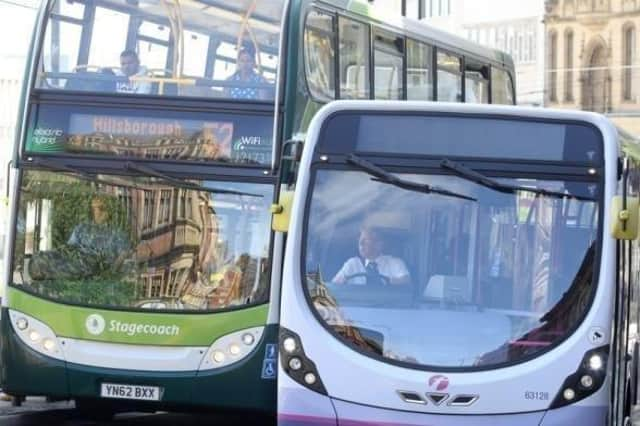“South Yorkshire and the Mayor too might learn from some of these models of good practice”


I welcomed the article “Transport body “not fit”: Mayor” in the Star today, February 20, quoting Dan Jarvis, particularly “we need a fresh imaginative approach to how we run local services, including exploring not-for profit and cooperative bus companies and expanding public ownership and local democratic accountability throughout our public transport system.” This indeed is music to my ears!
I have been fortunate to have travelled a bit through Europe by train and have been surprised and inspired by what I’ve seen. I wonder if South Yorkshire and the Mayor too might learn from some of these models of good practice.
Advertisement
Hide AdAdvertisement
Hide AdFirstly, a well maintained network of segregated cycle lanes making cycling a normal form of getting about. I was in Copenhagen in December, 10 years ago, as the snow fell. I was really surprised that at 7am the first thing the snow ploughs cleared were the cycle lanes, then the pavements then the roads. The head teacher I was staying with joined the other people going to work on their bikes on Copenhagen’s, clearly segregated cycle lanes. I learn that now 40 per cent of commuter journeys in Copenhagen are by bike.
In Cologne too, this time in August, I was really surprised to see city gents with bowler hats and brollies in their front baskets cycling off to work. At the other end of the day young women dressed for the night spots were cruising along the cycle lanes, this time with high heels in the bike basket.
Secondly, integrated, accessible system of public transport. In this respect, Bergen, Norway, a city even more hilly than Sheffield, also had its surprises. I was there to find out how and why Norway had a relatively low rate of psychological distress in young people. So I was surprised to be surprised by noticing so many old people out on the streets independently at bus stops including those with white sticks, Zimmer frames and wheelchairs.
The buses always came on time, so no one had to wait in the cold. It seemed the norm for the driver and fellow passengers was to assist people needing it onto the bus, putting frames and folded wheel chairs into the capacious boot of the bus. I checked it out and discovered Norway does not have more elderly and infirm adults than we do in the UK. I realised we/I am not seeing many older and infirm people out and about in Sheffield, more likely to be stuck in their homes and feeling lonely. Good, reliable and affordable public transport can do wonders for addressing social isolation and inclusion.
Advertisement
Hide AdAdvertisement
Hide AdAlso in Norway where transport routes are challenged by deep fjords, high mountains, major leaf fall and snow and ice, I was amazed how everything linked up and was on time. The bus linked with the ferry and with the trains. Every village shop, post office, library had a comprehensive timetable. I found out the transport system is run by different operating companies but the national and local governments assure this degree of integration and price controls.
I would love to go to Dunkirk to experience the innovative scheme the council there has introduced. For two years now they have made their public transport free of charge. This has dramatically increased the use of buses, 50 per cent of passengers on Dunkirk buses now are new ones and 48 per cent of those new ones are doing so instead of taking their car.
There are stories too from users how this has made the city a much friendlier place with people having conversations on buses and getting out so much more.
We can do it too! Massively improving public transport, safe cycling and walking will make our city a so much healthier and pleasant place to live and work.
Advertisement
Hide AdAdvertisement
Hide AdImagine clean air so we can delight in walking and safe cycling. Imagine affordable or free integrated public transport on routes we need, enabling social contact and accessibility for all.
Here now we are starkly facing a climate emergency. Road transport accounts for 37 per cent of the region’s carbon emissions.
These examples from Europe have helped those cities massively reduce car use and subsequently their carbon emissions.
I hope they can also extend our imagination and expectations of what we have a right to expect in our city and region.
Comment Guidelines
National World encourages reader discussion on our stories. User feedback, insights and back-and-forth exchanges add a rich layer of context to reporting. Please review our Community Guidelines before commenting.